Olive-backed Pipit Anthus hodgsoni
Vagrant. Siberia.
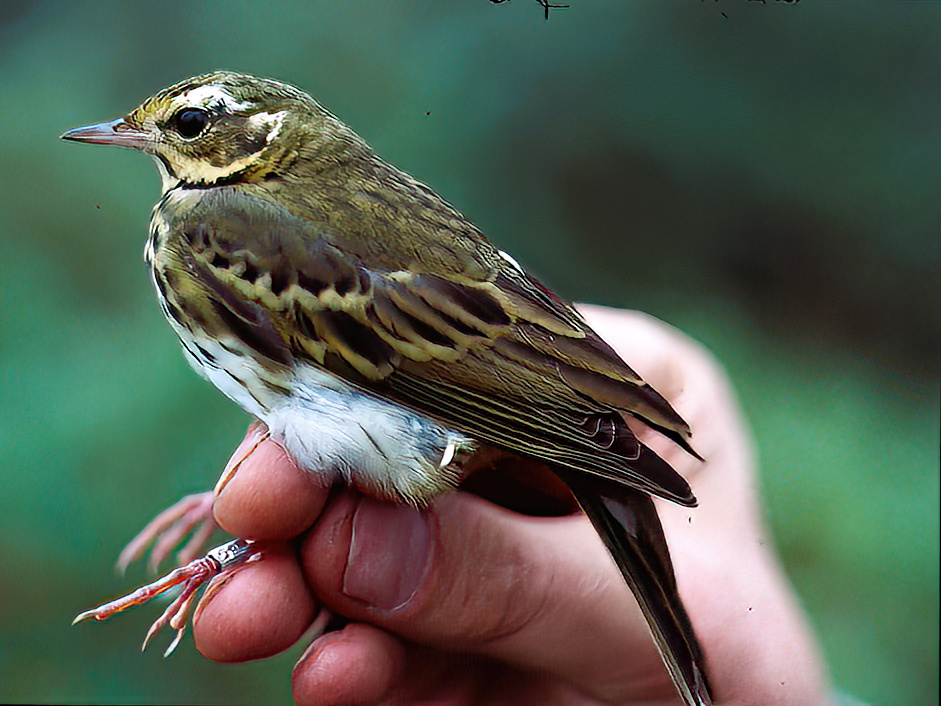
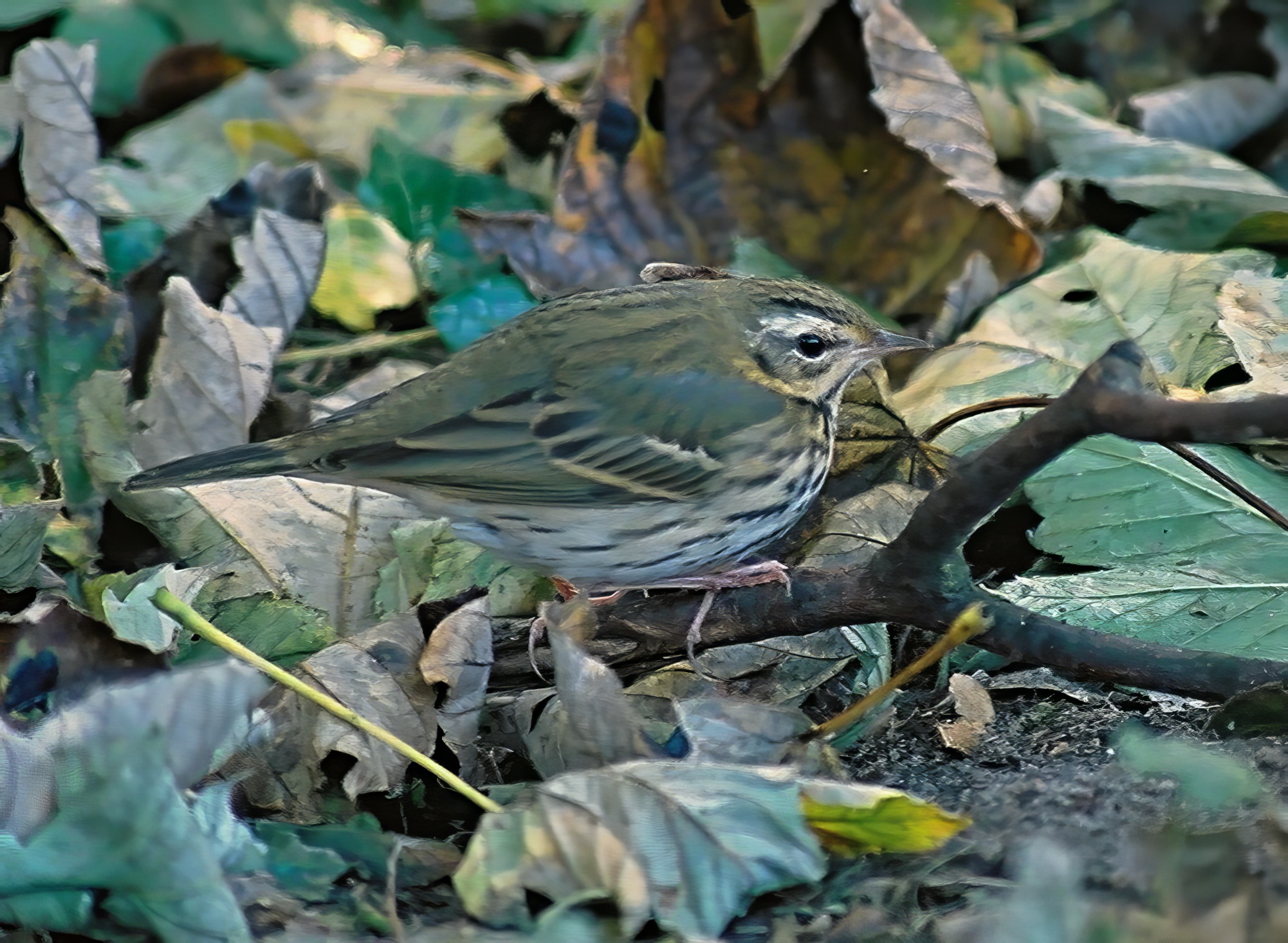
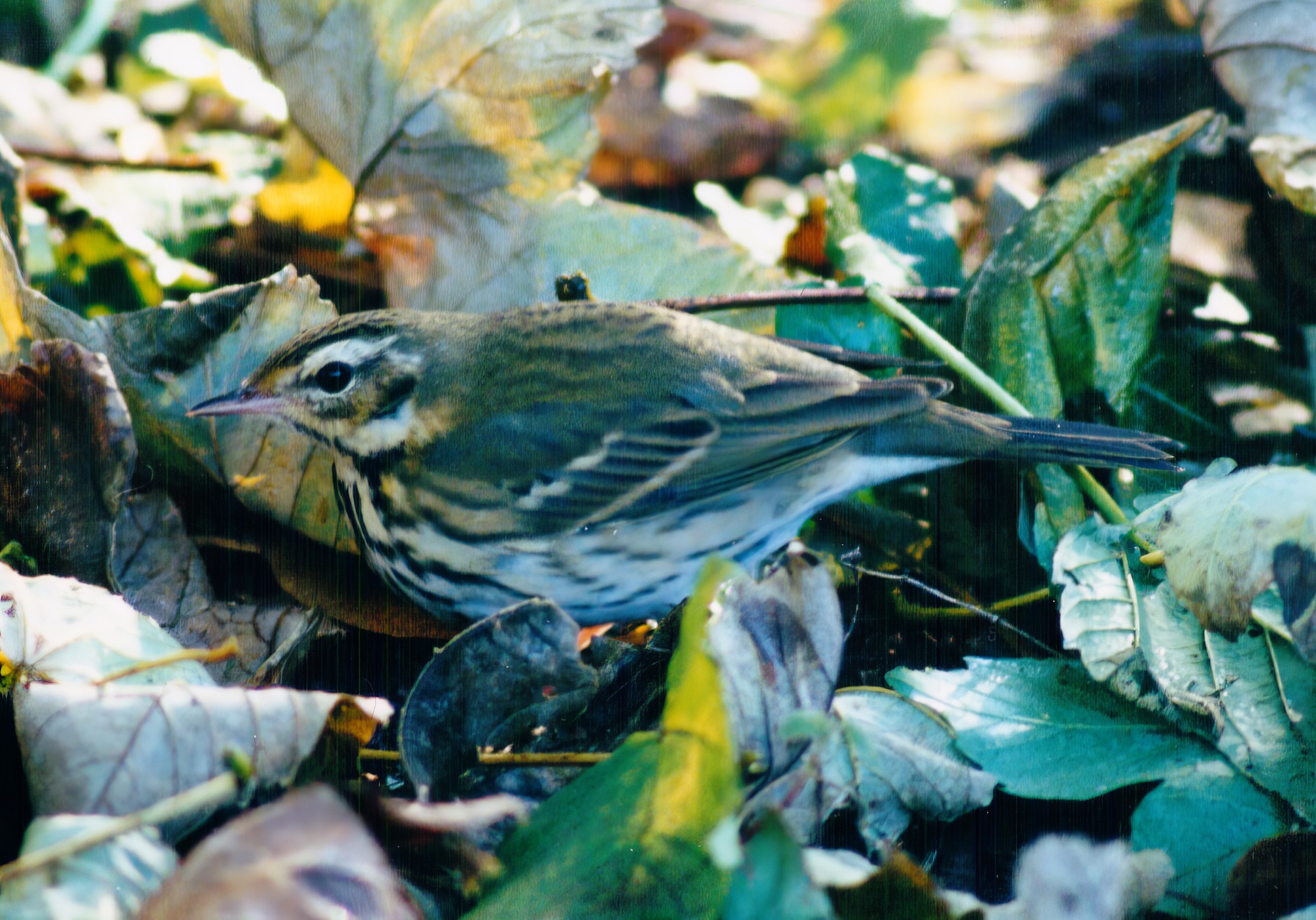
Olive-backed Pipits: left, Seacroft, October 20th, 1990 (Alan Ball); centre and right, Skegness October 18th 2003 (Neil Smith)
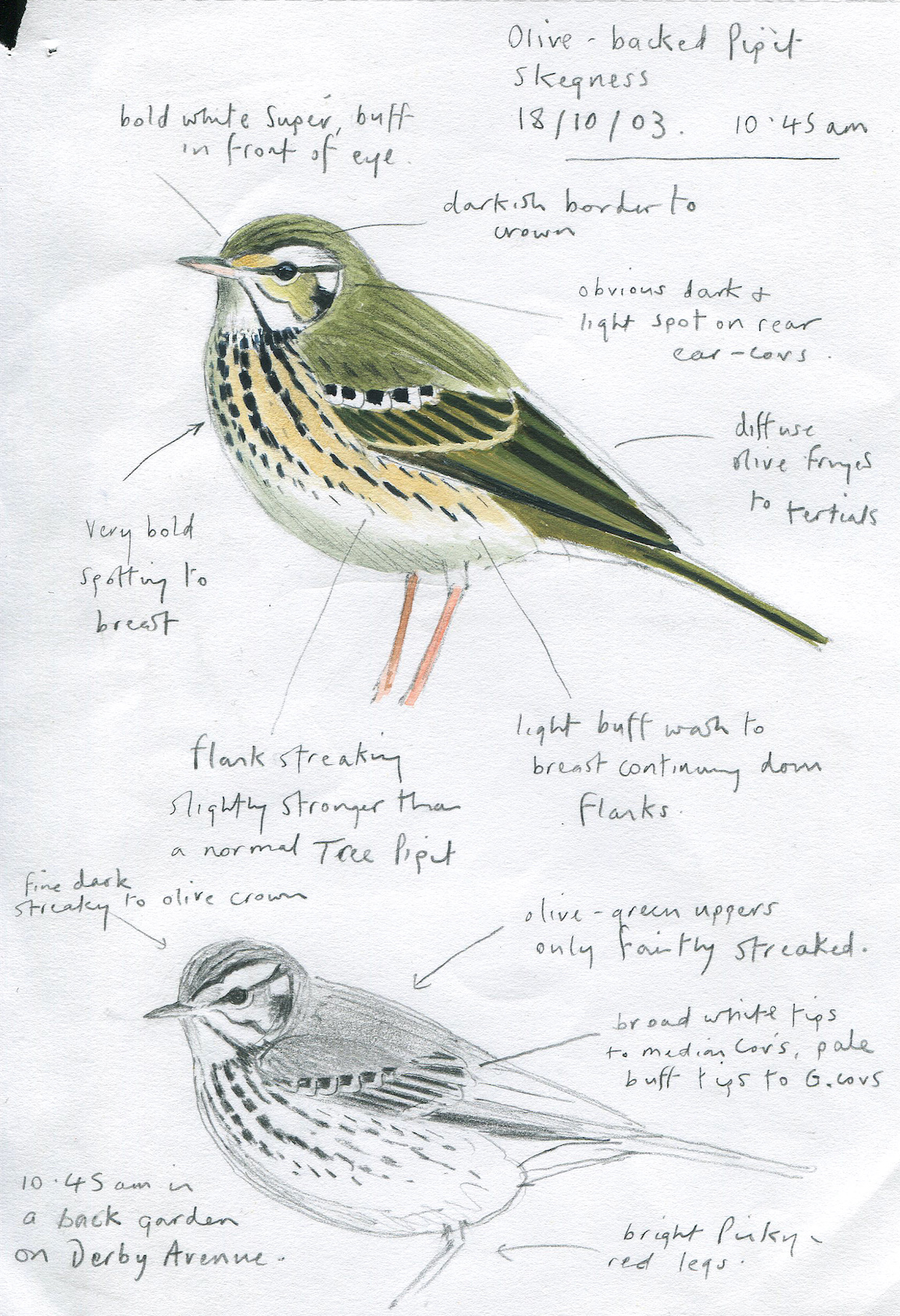
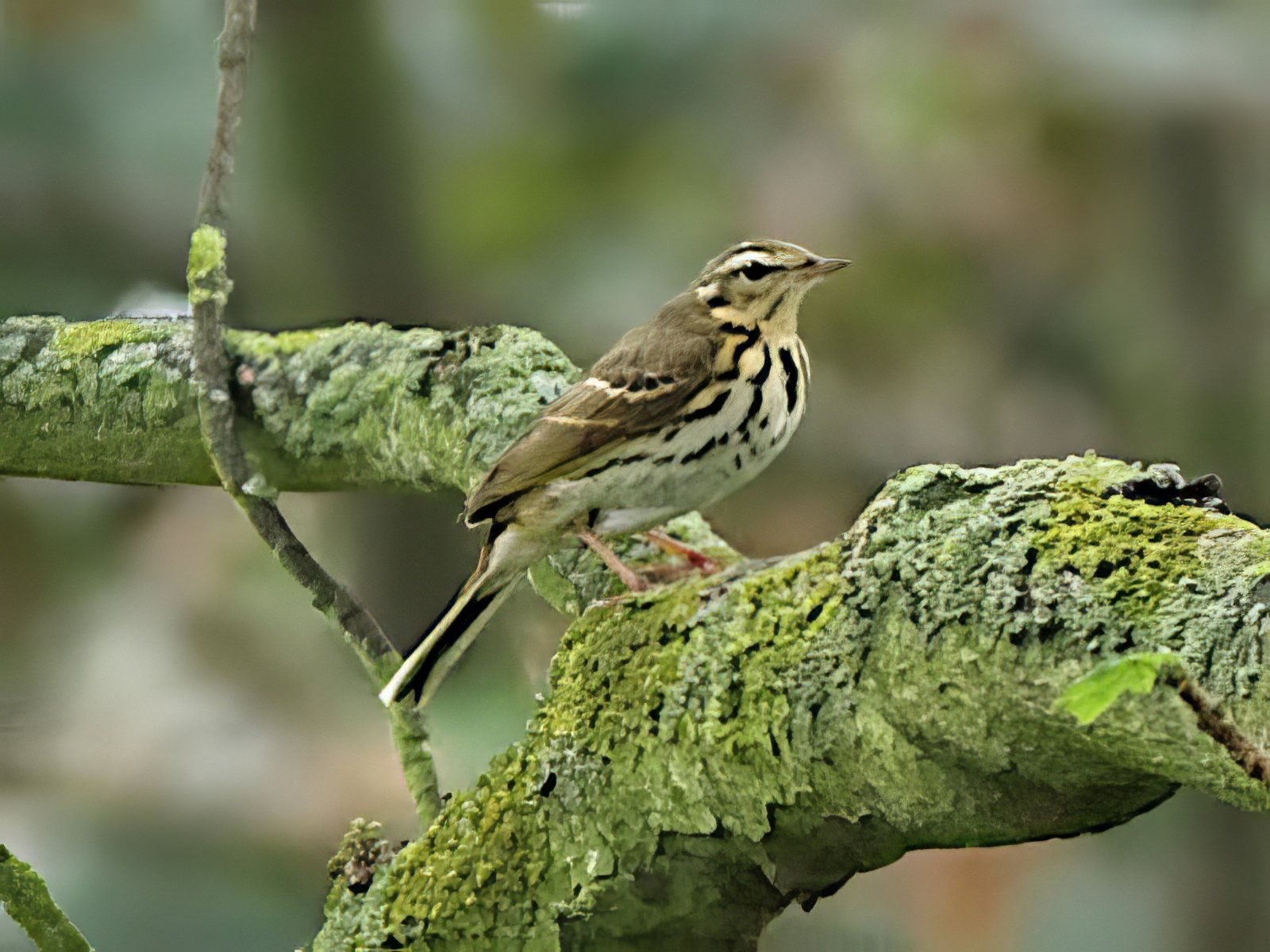
Olive-backed Pipits: left, Skegness October 18th 2003 (Sketch by John Wright); right, Gibraltar Point on 20th September 2014 (Russell Hayes).
The first county record was in October 1980 following a week of easterly winds. The second and third Olive-backed pipits for the County were not discovered for another decade in October 1990 during impressive fall conditions and again thanks to a prolonged period of easterly winds when one was found at Donna Nook from October 18th-20th October and another was trapped at Seacroft on October 20th. There have been 17 records in all up to 2020, seven of them at Gibraltar Point. Nine of the records have turned up during the two week window October 12th-25th, with the earliest being on September 17th and the latest on November 8th when there have been three records on that day. The most recent record at Goxhill Haven was also the one staying the latest, November 15th
There were 43 British records in 1990, and to echo the BBRC report of that year, this was an unexpected avalanche of records with twice as many as in any previous year and more than half the (then) British and Irish total. Since 1990 further ‘big years’ of double-figure records followed, including 1993 (34), 2011 (28) and 2012 (58) and BBRC ceased to consider the species after 2012.
| Site | First date | Last date | Count | Notes |
| Saltfleetby-Theddlethorpe NNR | 19/10/1980 | 1 | ||
| Donna Nook | 18/10/1990 | 20/10/1990 | 1 | |
| Seacroft, Skegness | 20/10/1990 | 1 | Trapped | |
| Gibraltar Point NNR | 12/10/1992 | 1 | ||
| Gibraltar Point NNR | 08/11/2000 | 1 | ||
| Gibraltar Point NNR | 26/09/2001 | 1 | ||
| Skegness | 18/10/2003 | 20/10/2003 | 1 | In a local garden |
| Gibraltar Point NNR | 02/11/2008 | 1 | ||
| Wroot | 13/10/2011 | 1 | ||
| Donna Nook | 12/10/2013 | 1 | ||
| Frampton Marsh | 13/10/2013 | 1 | ||
| Gibraltar Point NNR | 17/09/2014 | 20/10/2014 | 1 | |
| Gibraltar Point NNR | 25/10/2017 | 1 | ||
| North Cotes | 19/10/2018 | 1 | ||
| Gibraltar Point NNR | 08/11/2019 | 1 | ||
| Crook Bank, Saltfleetby-Theddlethorpe NNR | 15/10/2020 | 17/10/2020 | 1 | |
| Goxhill Haven | 08/11/2020 | 15/11/2020 | 1 | |
| Frampton Marsh | 03/11/2022 | 1 | Videoed in the office garden of RSPB Frampton |
Finder’s report: Olive-backed Pipit, October 19th, 1980, first county record.
by G. P. Catley
Note: this account appeared in the Lincolnshire Bird Report for 1980. There were four records in 1980 including this one, bringing the British total to 16 records. There was also one on Great Saltee, Co. Wexford, a first for Ireland.
Circumstances
Following a week of moderate to strong easterly winds, with high pressure stretching from Asia, and amid reports of Little Bunting and three Pallas’s Warblers from Spurn, I set off to Saltfleetby NR on October 19th with high hopes. However, after four and a half hours of solid slog which produced 10 Goldcrests and a Blackcap, thoroughly dejected I set off back towards Churchill Lane car park at 15.30 hr. As a final effort I skirted the Willows near the RAF base and was rewarded with a Chiffchaff!
On walking away from the Willows down the edge of a harvested bean however, I flushed a small pipit from the long grass on the edge of the field. It flew up weakly in the fresh NE wind and called ‘psee’ as it flew into a single small Willow tree. Being familiar with the calls of Tree and Red-throated Pipit, I was aware that this was not the normal call of either species, I tried desperately to get a look at the pipit, skulking in the foliage of the Willow. A brief head-on view showed a white breast with lines of large black splodges extending on to the flanks, and then it promptly walked down the branches of the tree and disappeared into the dyke. When it failed to reappear in five minutes, I made a cautious approach, but nothing appeared. Walking up and down the dyke soon flushed it again from near the original spot, and it flew to the same tree. Crossing the dyke, I obtained good views in bright sunlight before it again disappeared. I took the following notes.
Description
Size – size of a Tree Pipit bit noticeably pot-bellied, with medium length tail, constantly wagged up and down while perched.
Head –lores pale buffish cream; eye dark with a narrow pale eye ring; a narrow dark, blackish line through the eye underlining a striking supercilium, narrow and pale buff in front of the eye widening over and behind the eye brilliant white/cream. Supercilium quite short and ended abruptly at the rear like Moustached Warbler; a narrow black line enclosing the white with black. Crown dark olive with faint darker streaks fading out on nape also dark-olive; ear coverts dusky-brown with prominent black spot on rear lower edge; a creamy buff sub-moustachial line under ear coverts; prominent black moustachial streak extending into a large black smudge on the side of the neck.
Underparts – rows of heavy black spots and streaks forming a gorget round the throat and upper breast and reaching down on to the flanks at the sides; throat, breast, and belly creamy white and very striking with a faint buff wash on the flanks.
Upperparts – mantle dark olive with only faint dark streaks; tail dark olive-brown with white outer feathers. Median wing coverts black with narrow pale buff/white edges and tips; greater coverts blackish-brown with similar pale olive-buff edges; tertials dark brownish-olive with brighter olive edges and tips; primaries and secondaries all edged with bright olive, all together forming a very noticeable wing patten.
Bare parts - bill flesh pink with a dark brown ridge to the upper mandible; legs and feet bright flesh pink.
Call – given regularly in flight and sometimes when perched, a monosyllabic ‘psee’, short and clipped and only given one at a time; similar to Red-throated but shorter, weaker, more abrupt.
Behavioural notes – it was viewed for the next 45 minutes where it habitually perched when disturbed. It was rather inconspicuous as it fed in the long tangled vegetation on the field side and could have been easily missed. When perched up, it wagged its tail slowly up and down continually, and walked about in the branches with great alacrity and speed, stretching its neck up and down to peer out through the canopy.
Apart from the striking plumage which makes Olive-backed Pipit one of the easier West Palaearctic pipits to identify, the call was also very distinctive as were the unusual habits. I watched the bird until 16.25 hr. when it was still in the same small area, but it could not be found the next day.
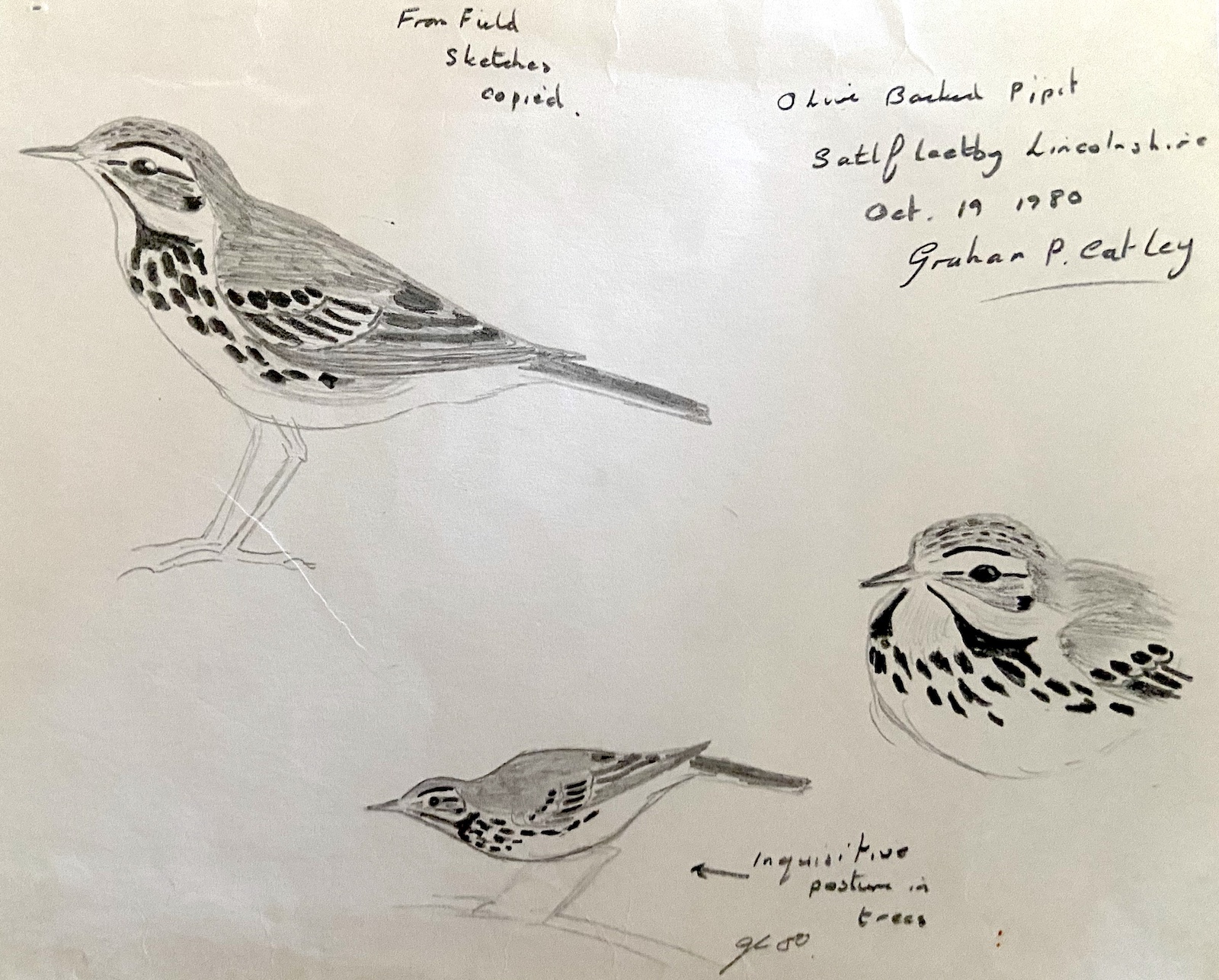
Olive-backed Pipit sketch from the original BBRC submission (Graham Catley)
.
Reference
Catley, G.P.C. (Undated). Accounts of Lincolnshire Rarities: Olive-backed Pipit at Saltfleetby, 19th October 1980. Lincolnshire Bird Report 1980, 34-35.
(Account prepared in December 2017; includes all records up to 2017)

